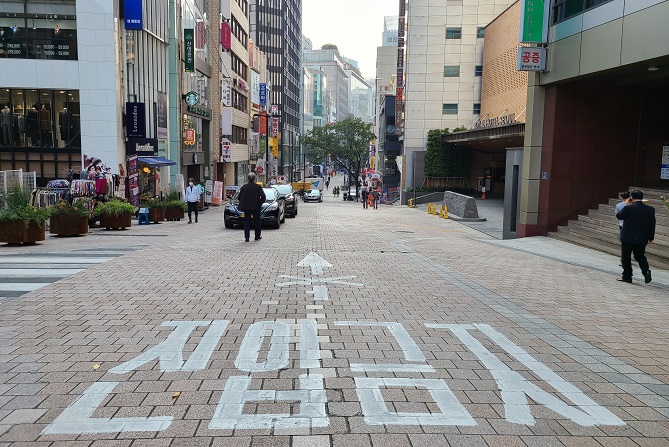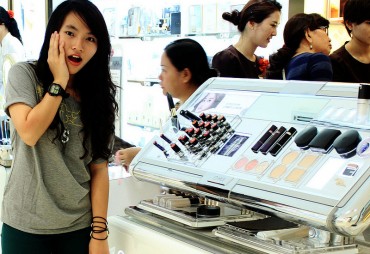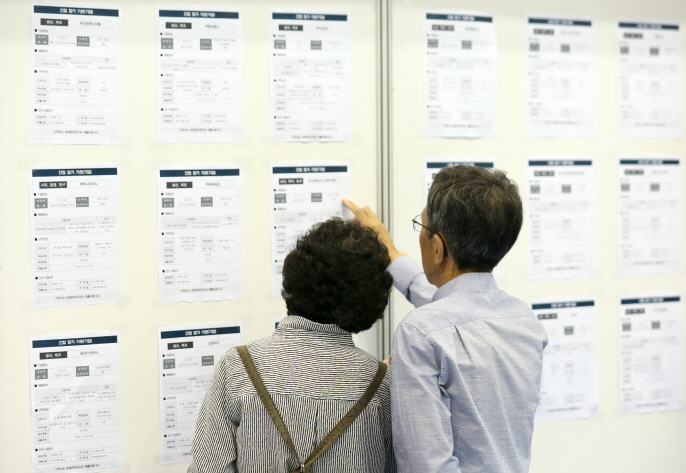
Senior job seekers looking at a bulletin board containing information on job posts at a job fair held in the southeastern port city of Busan. (Yonhap)
SEOUL, Nov. 6 (Korea Bizwire) — A new report shows that the number of involuntary retirees caused by the ‘COVID-19 recession’ has been on the rise, heightening uncertainty and anxiety over life after retirement in a society where achieving retirement security is increasingly elusive among older workers.
More than 70 percent of respondents over 40 years of age said their ‘earlier than expected’ retirement was involuntary, according to a study conducted by the Job Hope Center for Middle-Aged and Older People, which is run by the Federation of Korean Industries, a multifunctional association for domestic industries comprising South Korea’s major conglomerates.
A range of reasons affected their early retirement, including recommended resignations, honorary retirements, layoffs and termination of contracts (59.5 percent); sluggish businesses or closures (12.4 percent); and ill health (2.9 percent).
Reaching retirement age accounted for 19 percent of the respondents. The survey was conducted from Sept. 15 through Oct. 8 and over 300 older job seekers partook in the study.
A majority of workers over 40 said they wanted to keep working, and they noted that they would not insist on their past career fields when seeking reemployment, according to the survey.
About 58 percent of respondents expressed the willingness to try ‘unfamiliar’ fields if those jobs would guarantee their employment.
Respondents acknowledged that circumstances were not favorable to them. Many obstacles lie ahead in older workers’ reemployment pursuit. Age restrictions (58.1 percent), for example, topped the list of ‘stumbling blocks’ in their job seeking plans.
And about 10 percent of the respondents reported they just wanted to try something new, mainly because their past career path would not be promising anymore.
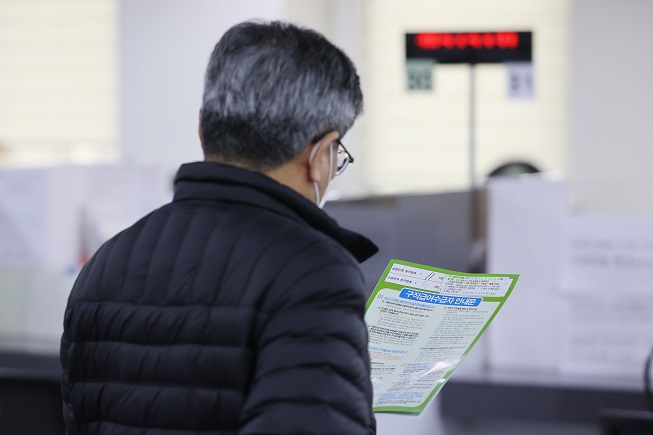
This March 24, 2021, file photo shows a man reading guidelines on applying for benefits at a state-run job center in western Seoul. (Yonhap)
The hardest part of older workers’ job seeking effort has everything to with age.
Fewer companies are hiring older workers, instead valuing ‘inexpensive’ younger workers, which is discouraging older jobseekers from finding new opportunities. Older workers are being pushed out of the job market in other words.
In the meantime, the average monthly income was 3.44 million won (US$3,000) when the older workers quit their previous jobs, according to the survey.
The respondents said their desired salary would be 2.72 million won per month, 20.9 percent lower than their average wage in the past.
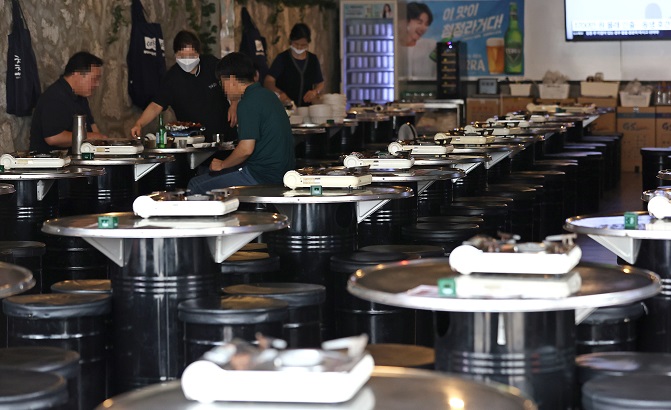
A group of people eats at a restaurant in Seoul on July 9, 2021, three days ahead of the introduction of Level 4 social distancing. Private meetings of three or more people will banned under the measures taken amid concerns of a fourth wave of COVID-19. (Yonhap)
Opening Restaurants Still Popular Option for Many Older Workers Out of Employment
But what about those who don’t succeed in finding a new job?
This ‘what if’ scenario — disturbing many older workers — comes down to one of South Korea’s chronic problems in owner-operated businesses: an excessively high rate of restaurant closures. Opening an eatery business is very common among older people because of the low barriers to entry.
According to statistics from the Ministry of Security and Public Administration, the authorities responsible for granting permission to open new businesses, tens of thousands of new restaurants open and close down each year.
Analysis into data shows that a total of 65,806 general restaurants (a common type of store that cooks and sells food) were opened last year, while 54,437 restaurants were shuttered.
The report was released in June by Jeong So-yoon, a senior researcher at the Korea Food Research Institute.
Given the ratio of closures to start-ups (82.7 percent), more than eight restaurants are closed permanently when new ten restaurants start operations.
As of 2019, the total number of restaurant businesses in South Korea was 754,000, while closed ones stood at 162,000, with a closing rate reaching 21.5 percent, nearly double the average closing rate (11.5 percent) in other industries.
The closing rate of the restaurant business ranks first among 52 industries based on the national tax statistics for 2019.
“To my understanding, the number of restaurants per capita in South Korea is more than three times higher than that of Japan and the United States,” said an expert in the food industry.
The high rate of restaurant closures is all the more important given the significant number of people whose livelihoods are dependent on restaurant operations.
The dire situation has pushed many policy makers to come up with a variety of ideas, but with few viable options.
Lee Jae-myung, the presidential candidate of the ruling Democratic Party, recently stirred up trouble by suggesting a ‘restaurant cap’ — an idea to put a limit on the number of restaurants.
His remarks triggered a huge political controversy with the main opposition party describing his suggestion as a ‘totalitarian idea’.
But the situations that begot Lee’s proposal show clearly that there are no suitable alternatives for older workers whose chances of reemployment are increasingly rare.
Now, with the first phase of ‘living with COVID-19′ campaign underway, many small business owners are encouraged to embrace hope in the midst of pain and suffering.
But one thing will be clear in a post-pandemic future. This age of uncertainty is here to stay, even when the new post-pandemic normal sets in.
Jerry M. Kim (jerry_kim@koreabizwire.com)


